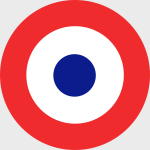Corgi AA37901 French SPAD XIII Fighter - Captain Charles Biddle, 13th Aero Squadron, 1918 (1:48 Scale)
"When my brother and I built the first man-carrying flying machine we thought that we were introducing into the world an invention which would make further wars practically impossible."
- Orville Wright, 1917
 The Societe Pour L'Aviation et ses Derivas, commonly known as SPAD, was a French aircraft manufacturer responsible for producing a number of significant fighter aircraft during the First World War. Originally called Societe de production des avions Deperdussin, the company was virtually bankrupt before the war when it was rescued by Louis Bleriot who changed the name while retaining the initials.
The Societe Pour L'Aviation et ses Derivas, commonly known as SPAD, was a French aircraft manufacturer responsible for producing a number of significant fighter aircraft during the First World War. Originally called Societe de production des avions Deperdussin, the company was virtually bankrupt before the war when it was rescued by Louis Bleriot who changed the name while retaining the initials.
SPAD began by building the "A-series" of pusher two-seat biplanes. In early 1915 SPAD began development of a tractor biplane designated the "S.V" which went into production as the SPAD S.VII. Improvements in the S.VII led first to the S.XII and then to the development of the definitive SPAD fighter, the S.XIII which entered service in May 1917 and equipped French, British and American squadrons. Over 8,000 S.XIIIs were eventually built.
The SPAD was most notably flown in service by Count Francesco Baracca and Capt. Eddie Rickenbacker, two of the Entente highest scoring aces of WWI with 34 and 26 victories respectively. It was also flown by most French aces, including Georges Guynemer, one of France's most popular pilots.
Pictured here is a 1:48 scale replica of a SPAD XIIIC fighter flown by Captain Charles Biddle of the 13th Aero Squadron during 1918.
Sold Out!
Dimensions:
Length: 5-1/4-inches
Wingspan: 6-3/4-inches
Release Date: March 2008
Historical Account: "Flyboys" - A famed American ace with seven victories, Charles Biddle attended Princeton and Harvard and was an attorney when he joined the French Air Service. After the war ended, he wrote "The Way of the Eagle". Flying a Kellner built SPAD XIII S4489, he was assigned to the 13th Aero Squadron on July 7th, 1918. The plane was returned to French control on December 15th. Biddle's personal livery included a blue and white radiator cowl -- probably in memory of his earlier French unit, SPA73 -- and a commander's tricolor band.
In additon, there were victory marks in the form of five notches in the Grim Reaper's bloody scythe and four tiny crosses behind the running skeleton. Another cross above the tricolor band represented a patched bullet hole.


